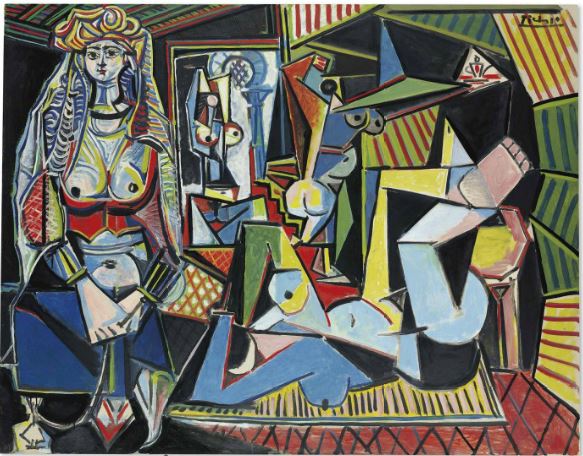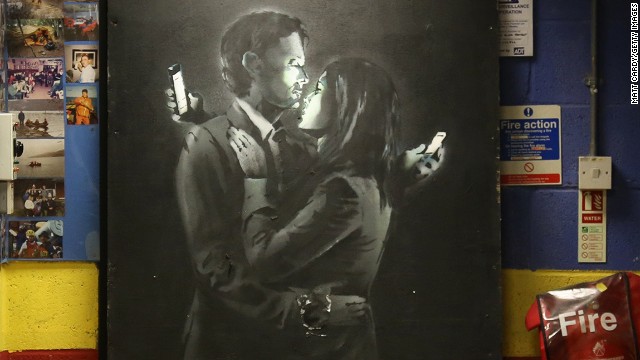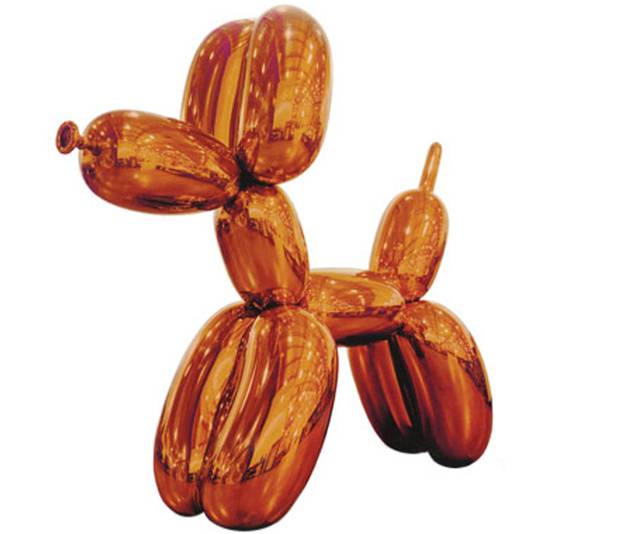Label: auction
Friday 30th September 2016The Emperor Goes to Auction You may or may not remember one of our more hilarious stories from the past couple of months: all across America, an anarchist artist collective put up naked - and incredibly unflattering - statues of United States Republican presidential candidate Donald J. Trump. Anarchists have never been known to pull punches in any form, so the title of the statue series was as offensive as the statues themselves, "The Emperor Has No Balls". Sure enough, they left out a specific part of typical human male anatomy during the sculpting process.
You may or may not remember one of our more hilarious stories from the past couple of months: all across America, an anarchist artist collective put up naked - and incredibly unflattering - statues of United States Republican presidential candidate Donald J. Trump. Anarchists have never been known to pull punches in any form, so the title of the statue series was as offensive as the statues themselves, "The Emperor Has No Balls". Sure enough, they left out a specific part of typical human male anatomy during the sculpting process.
The statues were immediately taken down by various parks departments across the country, of course, but not before they had managed to attract thousands of deeply amused viewers, and a corresponding number of selfies with the naughty and admittedly rather repellant statue.
The New York Parks Department won the entire internet that day with their simple response to the placement of the New York version of the statue, with their spokesman tweeting, "NYC Parks stands firmly against any unpermitted erection in city parks, no matter how small".
Zing.
But the saga of this incredibly disruptive yet hilarious art series hasn't ended, as it turns out that during this coming October, an auction house located in Los Angeles (where one of the statues appeared in an park) will be selling the foam piece. Surprisingly enough, the estimated worth of the statue is between $10,000 and $20,000 USD, although it is only expected to fetch somewhere between $10,000 and $15,000 by the time the gavel falls.
The auction house responsible for the upcoming auction had the following to say in a published statement: "The explicit statue quickly became a symbol of political protest art and garnered international coverage when the gallery refused to hide or censor the statue, choosing instead to display it prominently and in public view."
It seems hard to imagine (pun intended) that someone would willingly pay $15,000 USD for an ugly foam statue of Donald Trump naked, but then Julien's Auctions was right to call it an important piece of political protest art. It's likely to only increase in value regardless of how the election goes in November, whether as a result of his defeat or his shockingly unbelievable ascendancy to the highest public office in the nation.
Either way, it's an interesting investment - except that in this case, it's probably not such a bad thing that art investors would be likely to lock it away from the public view.
Posted on September 30th 2016 on 09:00pm
0 Comments
Friday 01st July 2016Auction Houses and Millennial Artists
Millennials tend to have it rough when it comes to dealing with the established world. It could be argued that this is a universal trend experienced by all new "labelled" generations, but the art world is an example that seems to be oddly resistant to the fresh and the new.
Did that incense you? Good, because it is not really quite accurate. It's not the art world in its entirety that resists the millennial generation, but rather it seems to be the institutions that grant the final seal of approval that are resisting.
Those venerable arbiters of value and worth, the auction houses, are those who seem intent on snubbing the millennial generation. It would be an interesting comparison to see if this trend was paralleled by a similar disdain for the previous generations of new artists as they developed, but unfortunately that degree of research is out of the scope of this particular post.
Nevertheless, the data doesn't lie. In May, when the major auction houses such as Christie's, Sotheby's and so on stage their major spring sales, there was a strange absence of young modern artists. Not a complete absence, but one of that certainly could give rise to a bit of curiosity about the choices.
Charlie Moffat Jr. is the contemporary art specialist for Sotheby's and he explains some of the issue. "We've seen a lot of work produced by a lot of artists in a short period of time, [and so] we've seen an edited market for young artists."
This is certainly plausible on the face of it, and it's probably still a bit of a shock for those used to seeing everything from the paintings of old masters to some of the horrors of 90's contemporary art to suddenly be forced to come to terms with an entirely different (and primarily digital) paradigm.
Unfortunately, though, one wonders how much longer the auction house will be the arbiter of value and worth, as we mentioned earlier. Part of the digital revolution is the annihilation of the original, and that makes it a little more difficult to pin down the value of a work.
Posted on July 01st 2016 on 07:43pm
0 Comments
Friday 14th August 2015The End of the Auction House?
It's a classic staple of the art world: numerous collectors and their factors gathering for a special event, an event in which millions of dollars worth of art changes hands, with a tidy profit for the organizers - the auction house. In a modern jet-setting world, it hardly seems difficult to imagine that the ultra-rich and their spokespeople are willing to fly around the globe in order to be at these events in person. Yet as the world moves at a faster and faster pace, sometimes it seems that the luxury of an in-person visit is often out of the question, despite what the record-setting auction sales numbers might tell you at first glance. Not only that, but the truly global nature of modern art collecting means that collectors are no longer concentrated in the West, with easy access to New York and London, not to mention the numbers of collectors who can't - or won't - afford to fly around the world just to make a few bucks.
Enter the online auction. Ever since a struggling little startup named eBay shook the ecommerce world to its very foundations, online auctions have grown in popularity, and it was only a matter of time before some new tech startup would come along and attempt to revolutionize the world of the art auction. Sotheby's, one of the premier auction houses in the physical world, has partnered with online auction specialists eBay and tech company Invaluable to change the way art auctions are conducted - and they're finally getting some traction. It's been a struggle to gain a foothold in a market so entrenched in the physical world, but with sales and bid prices going up nearly 35% since 2014, it's possible that the tipping point has finally been reached.
Speaking to Artnews online magazine in an interview, Rob Weisberg, the CEO of Invaluable, explained: "People like you and me have probably spent the greater portion of our lives connected and able to transact online and via mobile devices. You may not have the time or the inclination to read through an auction’s 200-page, color-coded paper catalogue; instead, you’d prefer a personalized communication that filters the merchandise and can show you items you actually might want to buy. And these are things you can buy with the click of a button while sitting in the comfort of your own home."
While it's not like to be the end of the major players in the auction world, perhaps the very term 'auction house' will cease to mean what it once did!
Posted on August 14th 2015 on 02:31pm
0 Comments
Friday 29th May 2015Incredible New Auction Sale Record While it seems like the entire art world is abuzz about art fairs lately, the auction world is still going strong and setting new records of its own all the time. The big Western auction houses, Christie's, Sotheby's and the lot are regularly being joined by new auction houses in emerging markets in rapidly developing nations such as China, India, and the United Arab Emirates. The older houses still seem to be the reigning champions when it comes to sales records, as we saw over the course of May when a brand new auction record was set at Christie's.
While it seems like the entire art world is abuzz about art fairs lately, the auction world is still going strong and setting new records of its own all the time. The big Western auction houses, Christie's, Sotheby's and the lot are regularly being joined by new auction houses in emerging markets in rapidly developing nations such as China, India, and the United Arab Emirates. The older houses still seem to be the reigning champions when it comes to sales records, as we saw over the course of May when a brand new auction record was set at Christie's.
The auctioned piece that set the new world record was Women of Algiers (Version O) by Cubist master Pablo Picasso, one of the pioneers of the entire Cubist genre. The work, which was completed on February 4, 1955, is an oil on canvas piece featuring the characteristic bright colours and blend of organic and geometric shapes that are the hallmarks of the Cubist movement. The final auction price? A whopping $179.4 million USD. This makes it not just the record for a Picasso, not just the record for a painting, but the record for any piece of art ever sold at an auction in the world. (See the painting to the right, courtesy of Christie's.)
That's not the only thing that's stunning, though. This individual record sale was part of a larger week-long auction series put on by Christie's which featured artists from the 20th century, and included many of the biggest artistic names of the century. Aside from the Pablo Picasso mentioned, Claude Monet, Marcel Duchamp, René Magritte, Egon Schiele and Piet Mondrian were among those on the block. The final total for the works that changed hands? $1.4 billion US dollars. Yes, billion with a 'b'.
Perhaps auctioneers aren't going to be so worried about art fairs after all, if they keep consistently breaking their own records. Naturally, art from such established masters is an excellent investment that is virtally guaranteed to appreciate in value for those who have the initial capital – after all, it's like real estate – it's not like those old masters will be making any more of it. Perhaps there is room for auctions and art fairs to co-exist, as they tend to operate in slightly different areas of the market, but much of the smaller business that was once the bread and butter of the auction house has moved away to the art fair – we'll do a bit of research to see what the record sale made at an art fair is!
Posted on May 29th 2015 on 03:41am
0 Comments
Wednesday 29th April 2015Thievery or Idiocy?

When you hear about a painting mysteriously disappearing, it's generally pretty safe to assume that the piece was stolen - especially when it's just been listed and sold by an auction house for over £2.2 million. Art theft is a major problem in the industry, and while it's not exactly a new wrinkle, there are those who are naturally extremely frustrated by the possibility of having their new and incredibly expensive purchase lifted out by a five-finger discount.
In this case, however, the story is a bit more ridiculous than a dashing, debonair gentleman cat burglar (or even a dodgy group of backstabbing thieves). The painting in question is entitled Snowy Mountain (shown to the right), painted in 2012 by Chinese artist Cui Ruzhuo, who also happens to be one of (if not *the*) highest-fetching Chinese artists still living, and while it wasn't exactly stolen, as far as police can yet determine, it has definitely disappeared from the Grand Hyatt hotel where it was being sold on the block. The bizarre wrinkle became apparent when police took the standard precaution of reviewing the CCTV footage of the time in question.
Quite clearly, it shows cleaning staff collecting the painting and absconding with it, which has lead police to consider the possibility that it has now taken up residence in one of the city's landfill sites. While the Grand Hyatt has neither confirmed nor denied the possibility that their cleaning staff are responsible for the theft / mix-up, it has stated that hotel staff aren't supposed to have anything to do with the auction items, as their value is quite extreme, and that private companies often provide their own security and custodial staff.
Poly Culture, the company which hosted the auction, is also the third-largest auction house in the world behind Christie's and Sotheby's when ranked by revenue, and was hosting the auction in Hong Kong. Awkwardly, this is their very first sale following an initial public offering earlier this year, adding some additional major embarrassment to the mess. This does make it seem more likely that they were being targeted as being unprepared by some extremely prepared thieves, but there is no evidence yet that suggests this was the case. Only time will tell if the painting is ever recovered, but who knows what will happen to Poly Culture's stock price after a huge gaffe like this.
Posted on April 29th 2015 on 12:53pm
0 Comments
Friday 23rd January 2015Shaking Up the Auction World - Again

The internet has been responsible for some of the biggest shakeups in supposedly firmly established industries - that's the nature of a disruptive technology. As we grow used to what it really means to have instant access to information from almost anywhere in the world, however, and as an entire generation grows up never having lived without the internet, its role as a disruptive technology is starting to draw to a close - at least, so it may seem.
Ever since the massive debut of eBay (and its partner Paypal, which made Elon Musk of SpaceX and Tesla the billionaire he is today), the auction world reeled as the possibilities of online auctioneering took hold in the public imagination and spread like wildfire. The more staid and formalized world of art auctions, secure in its market and its clientele, barely blinked - who was likely to spend $100 million on eBay?
Thanks to a new online auction house startup named Fine Art Bourse, or FAB, this may be all about to change. “We will go live with a truly global business”, founder and fine art auctioneer, Tim Goodman said. “This global presence will be unique to the online art industry,” he added.
With fee structures inherently designed to be rock-bottom compared to the more traditional auction houses - Sotheby's, Christie's and the like - they have a real chance of making some serious inroads into the auction market. “My target is to have 2 per cent of the market — about $280m — by year four.” An impressive initial goal, although still a rather long way off from the bigger players in the market.
Nevertheless, it will be interesting to see whether or not high-profile collectors and their agents are willing to engage with the newcomer startup, which has already raised $2 million in seed money for the initial round of funding, and is hoping to gain another $5.4 million to complete startup operations. The entire model is intended to be lean, and, in the words of Goodman, "humble", although it's hard to see how a multimillion dollar business can ever be considered humble. Perhaps that's a reflection of just how grandiose the other players are in the market, and an excellent indicator of the success FAB is likely to find by playing its own role as a disruptive technology.
Posted on January 23rd 2015 on 03:12pm
0 Comments
Friday 19th December 2014All Time Auction Records

Just when you think the art market can't get even more incredibly rich, it does. Despite many predictions that the current auction sale bubble is going to burst, sending all those multimillionaires and billionaires into tears as the value of their precious art collections crumble, the market just keeps getting stronger and stronger. Of course, that's always how things look before a bubble burst, but after the recent contemporary art auction held by Christie's, it's clearly not quite ready to burst just yet.
Only a few days previously, Sotheby's, the primary competitor in auctioneering to Christie's, set a respectable mark at just shy of $344 million USD for contemporary art, including $36 million for a new Jasper Johns record sale price for Flag (1983). Christie's, however, completely blew that figure out of the water with a truly staggering $852.9 million USD mark, spaced across 75 lots.
Figures like these make the working artists among us cringe and salivate at the same time, wishing our pieces would sell for such ridiculously high sums, and bemoaning the fact that the artists never see a penny of these incredible amounts. They do, however, also point out the fact that the art auction market is almost wildly divergent from the actual art world itself, the one where creation and appreciation of art is important for an emotional reason rather than a financial one.
The dealers and speculators who buy and sell works at these prices aren't really buying and selling art in the way that most of us mere mortals think about it, they're effectively trading stock. They don't buy pieces because they appreciate their beauty, or because they like the artist, or because they like the way it makes them feel. They don't even purchase them because they're fashionable - they purchase them because they expect to be able to turn them around in a few years and sell them for even more money. It's not about the art, it's about the perception of value.
So next time you see a multi-million dollar price tag, don't despair - remember that they might as well be cowrie shells, pieces of petrified elephant feces, or anything else that everyone simply agrees has value. It doesn't necessarily make them any good.
Posted on December 19th 2014 on 06:42pm
0 Comments
Friday 02nd May 2014A Bit More Banksy

By now, it's almost inevitable that you've heard of the street artist named Banksy. Whether just from reading this blog, or your own personal interest in his work, it's impossible to deny the fact that he has been one of the major driving forces behind the acceptance of street art into the world of high culture. After getting a start 20 years ago in Bristol, UK, Banksy has since graced some of the world's leading art galleries and auction houses with his work, all while maintaining a sly sense of notoriety - though whether or not this can be considered more than a marketing ploy at this point is up for debate.
One of the most interesting consequences of his style of work, however, is the question of ownership. If a kid with a spray can and a stencil creates a piece of work, typically it's either ignored, or eventually removed by a town council's anti-graffiti group. When the artist behind a stenciled piece is an internationally renowned figure, however, people start to sit up and take notice.
But who owns the piece? If Banksy had created his work on canvas he bought, naturally he would be considered the owner by copyright law. But considering that he uses real property that belongs to someone else (and without their consent), does the piece automatically become the property of the owner of the building or structure that acts as canvas?
This question was recently highlighted by a Banksy piece that appeared on the wall of a community centre in Bristol, back where the phenom got his start. The piece, which was apparently titled 'Mobile Lovers', was initially released in an Instagram photo, which fans finally tracked down to the Broad Plain Boys youth centre using digital sleuthing techniques that included Google Street View.
Within a few hours of the piece being properly discovered, however, members of the youth centre had removed it from the wall with a crowbar and set it up inside. While they are allowing anyone free access to view the piece, they are requesting a voluntary donation to help keep the centre up and running.
It will be interesting to see what they plan to do with the piece in the long term, as Banksy originals have been fetching large sums of money at auction houses all over the world - although there may be some complex legal implications if they do attempt to auction the piece.
Posted on May 02nd 2014 on 05:23pm
0 Comments
Wednesday 30th April 2014But Does Money Make It Art?

Ever since Marcel Duchamps stuck a urinal in a gallery, scrawled some initials on it, and called it art, people have been in turn baffled and amazed by the often bizarre world of modern art. For a while, collectors were content to be simply bemused by this emerging trend, if they were feeling charitable, and otherwise, regarding the rise of modern art as a fad not worthy of their valuable currency. The traditional art world rolled on, and the amounts of money that began to be paid for classical works eventually began to reach stratospheric levels. Almost all of the most expensive paintings ever sold were auctioned in the last 20 or 30 years, with the current record holder for highest auction price held by 'The Card Players' by Paul Cezanne, which was sold for an astonishing $269.4 million USD in 2011.
A curious fact about these incredibly valuable works, of course, is that the artist never saw a dime of these prices, largely because they are only able to command such prices posthumously. With the go go go world of modern art, however, this has all begun to change. Gerhard Richter, a German born artist, set the world record for a piece sold by a living artist with his painting Abstraktes Bild, which sold for $34 million USD in 2011. He then smashed his own record a scant 2 years later in 2013, when his piece Domplatz, Mailand was sold for $37 million. These are incredible figures for a still-living artist - or at least, they were until the tail end of 2013.
Jeff Koon's 'Balloon Dog (Orange)', shown above, is now the world record holder for the highest auction price for a work by a living artist, at a truly incredible $58.4 million USD via Christie's auction house in New York City. According to Christie's, "the work is considered the supreme example from Koon’s highly desired and acclaimed Celebration Series, begun in the early 1990s. The series evolved from Koons's desire to recreate the ecstatic experiences of a child's enjoyment of the world with universal signifiers."
This seems like something of a far-flung sentiment for a stainless steel representation of a balloon animal. Far be it for this writer to question the erudite minds at Christie's, but as they exist entirely to turn a profit, one is left wondering '… but is it art?'
Posted on April 30th 2014 on 08:42pm
0 Comments
 You may or may not remember one of our more hilarious stories from the past couple of months: all across America, an anarchist artist collective put up naked - and incredibly unflattering - statues of United States Republican presidential candidate Donald J. Trump. Anarchists have never been known to pull punches in any form, so the title of the statue series was as offensive as the statues themselves, "The Emperor Has No Balls". Sure enough, they left out a specific part of typical human male anatomy during the sculpting process.
You may or may not remember one of our more hilarious stories from the past couple of months: all across America, an anarchist artist collective put up naked - and incredibly unflattering - statues of United States Republican presidential candidate Donald J. Trump. Anarchists have never been known to pull punches in any form, so the title of the statue series was as offensive as the statues themselves, "The Emperor Has No Balls". Sure enough, they left out a specific part of typical human male anatomy during the sculpting process.
 Millennials tend to have it rough when it comes to dealing with the established world. It could be argued that this is a universal trend experienced by all new "labelled" generations, but the art world is an example that seems to be oddly resistant to the fresh and the new.
Millennials tend to have it rough when it comes to dealing with the established world. It could be argued that this is a universal trend experienced by all new "labelled" generations, but the art world is an example that seems to be oddly resistant to the fresh and the new. It's a classic staple of the art world: numerous collectors and their factors gathering for a special event, an event in which millions of dollars worth of art changes hands, with a tidy profit for the organizers - the auction house. In a modern jet-setting world, it hardly seems difficult to imagine that the ultra-rich and their spokespeople are willing to fly around the globe in order to be at these events in person. Yet as the world moves at a faster and faster pace, sometimes it seems that the luxury of an in-person visit is often out of the question, despite what the record-setting auction sales numbers might tell you at first glance. Not only that, but the truly global nature of modern art collecting means that collectors are no longer concentrated in the West, with easy access to New York and London, not to mention the numbers of collectors who can't - or won't - afford to fly around the world just to make a few bucks.
It's a classic staple of the art world: numerous collectors and their factors gathering for a special event, an event in which millions of dollars worth of art changes hands, with a tidy profit for the organizers - the auction house. In a modern jet-setting world, it hardly seems difficult to imagine that the ultra-rich and their spokespeople are willing to fly around the globe in order to be at these events in person. Yet as the world moves at a faster and faster pace, sometimes it seems that the luxury of an in-person visit is often out of the question, despite what the record-setting auction sales numbers might tell you at first glance. Not only that, but the truly global nature of modern art collecting means that collectors are no longer concentrated in the West, with easy access to New York and London, not to mention the numbers of collectors who can't - or won't - afford to fly around the world just to make a few bucks. While it seems like the entire art world is abuzz about art fairs lately, the auction world is still going strong and setting new records of its own all the time. The big Western auction houses, Christie's, Sotheby's and the lot are regularly being joined by new auction houses in emerging markets in rapidly developing nations such as China, India, and the United Arab Emirates. The older houses still seem to be the reigning champions when it comes to sales records, as we saw over the course of May when a brand new auction record was set at Christie's.
While it seems like the entire art world is abuzz about art fairs lately, the auction world is still going strong and setting new records of its own all the time. The big Western auction houses, Christie's, Sotheby's and the lot are regularly being joined by new auction houses in emerging markets in rapidly developing nations such as China, India, and the United Arab Emirates. The older houses still seem to be the reigning champions when it comes to sales records, as we saw over the course of May when a brand new auction record was set at Christie's. When you hear about a painting mysteriously disappearing, it's generally pretty safe to assume that the piece was stolen - especially when it's just been listed and sold by an auction house for over £2.2 million. Art theft is a major problem in the industry, and while it's not exactly a new wrinkle, there are those who are naturally extremely frustrated by the possibility of having their new and incredibly expensive purchase lifted out by a five-finger discount.
When you hear about a painting mysteriously disappearing, it's generally pretty safe to assume that the piece was stolen - especially when it's just been listed and sold by an auction house for over £2.2 million. Art theft is a major problem in the industry, and while it's not exactly a new wrinkle, there are those who are naturally extremely frustrated by the possibility of having their new and incredibly expensive purchase lifted out by a five-finger discount. The internet has been responsible for some of the biggest shakeups in supposedly firmly established industries - that's the nature of a disruptive technology. As we grow used to what it really means to have instant access to information from almost anywhere in the world, however, and as an entire generation grows up never having lived without the internet, its role as a disruptive technology is starting to draw to a close - at least, so it may seem.
The internet has been responsible for some of the biggest shakeups in supposedly firmly established industries - that's the nature of a disruptive technology. As we grow used to what it really means to have instant access to information from almost anywhere in the world, however, and as an entire generation grows up never having lived without the internet, its role as a disruptive technology is starting to draw to a close - at least, so it may seem. Just when you think the art market can't get even more incredibly rich, it does. Despite many predictions that the current auction sale bubble is going to burst, sending all those multimillionaires and billionaires into tears as the value of their precious art collections crumble, the market just keeps getting stronger and stronger. Of course, that's always how things look before a bubble burst, but after the recent contemporary art auction held by Christie's, it's clearly not quite ready to burst just yet.
Just when you think the art market can't get even more incredibly rich, it does. Despite many predictions that the current auction sale bubble is going to burst, sending all those multimillionaires and billionaires into tears as the value of their precious art collections crumble, the market just keeps getting stronger and stronger. Of course, that's always how things look before a bubble burst, but after the recent contemporary art auction held by Christie's, it's clearly not quite ready to burst just yet. By now, it's almost inevitable that you've heard of the street artist named Banksy. Whether just from reading this blog, or your own personal interest in his work, it's impossible to deny the fact that he has been one of the major driving forces behind the acceptance of street art into the world of high culture. After getting a start 20 years ago in Bristol, UK, Banksy has since graced some of the world's leading art galleries and auction houses with his work, all while maintaining a sly sense of notoriety - though whether or not this can be considered more than a marketing ploy at this point is up for debate.
By now, it's almost inevitable that you've heard of the street artist named Banksy. Whether just from reading this blog, or your own personal interest in his work, it's impossible to deny the fact that he has been one of the major driving forces behind the acceptance of street art into the world of high culture. After getting a start 20 years ago in Bristol, UK, Banksy has since graced some of the world's leading art galleries and auction houses with his work, all while maintaining a sly sense of notoriety - though whether or not this can be considered more than a marketing ploy at this point is up for debate. Ever since Marcel Duchamps stuck a urinal in a gallery, scrawled some initials on it, and called it art, people have been in turn baffled and amazed by the often bizarre world of modern art. For a while, collectors were content to be simply bemused by this emerging trend, if they were feeling charitable, and otherwise, regarding the rise of modern art as a fad not worthy of their valuable currency. The traditional art world rolled on, and the amounts of money that began to be paid for classical works eventually began to reach stratospheric levels. Almost all of the most expensive paintings ever sold were auctioned in the last 20 or 30 years, with the current record holder for highest auction price held by 'The Card Players' by Paul Cezanne, which was sold for an astonishing $269.4 million USD in 2011.
Ever since Marcel Duchamps stuck a urinal in a gallery, scrawled some initials on it, and called it art, people have been in turn baffled and amazed by the often bizarre world of modern art. For a while, collectors were content to be simply bemused by this emerging trend, if they were feeling charitable, and otherwise, regarding the rise of modern art as a fad not worthy of their valuable currency. The traditional art world rolled on, and the amounts of money that began to be paid for classical works eventually began to reach stratospheric levels. Almost all of the most expensive paintings ever sold were auctioned in the last 20 or 30 years, with the current record holder for highest auction price held by 'The Card Players' by Paul Cezanne, which was sold for an astonishing $269.4 million USD in 2011.



